🌍 Climate Change: Essential Concepts for Reading Comprehension
Climate change refers to long-term shifts in global or regional climate patterns, often driven by natural processes and human activities. This phenomenon impacts ecosystems, weather patterns, and human societies. RC passages on climate change frequently explore topics like greenhouse gases, renewable energy, and policy frameworks. Understanding these concepts is essential for analyzing arguments, evaluating evidence, and interpreting data related to environmental challenges.
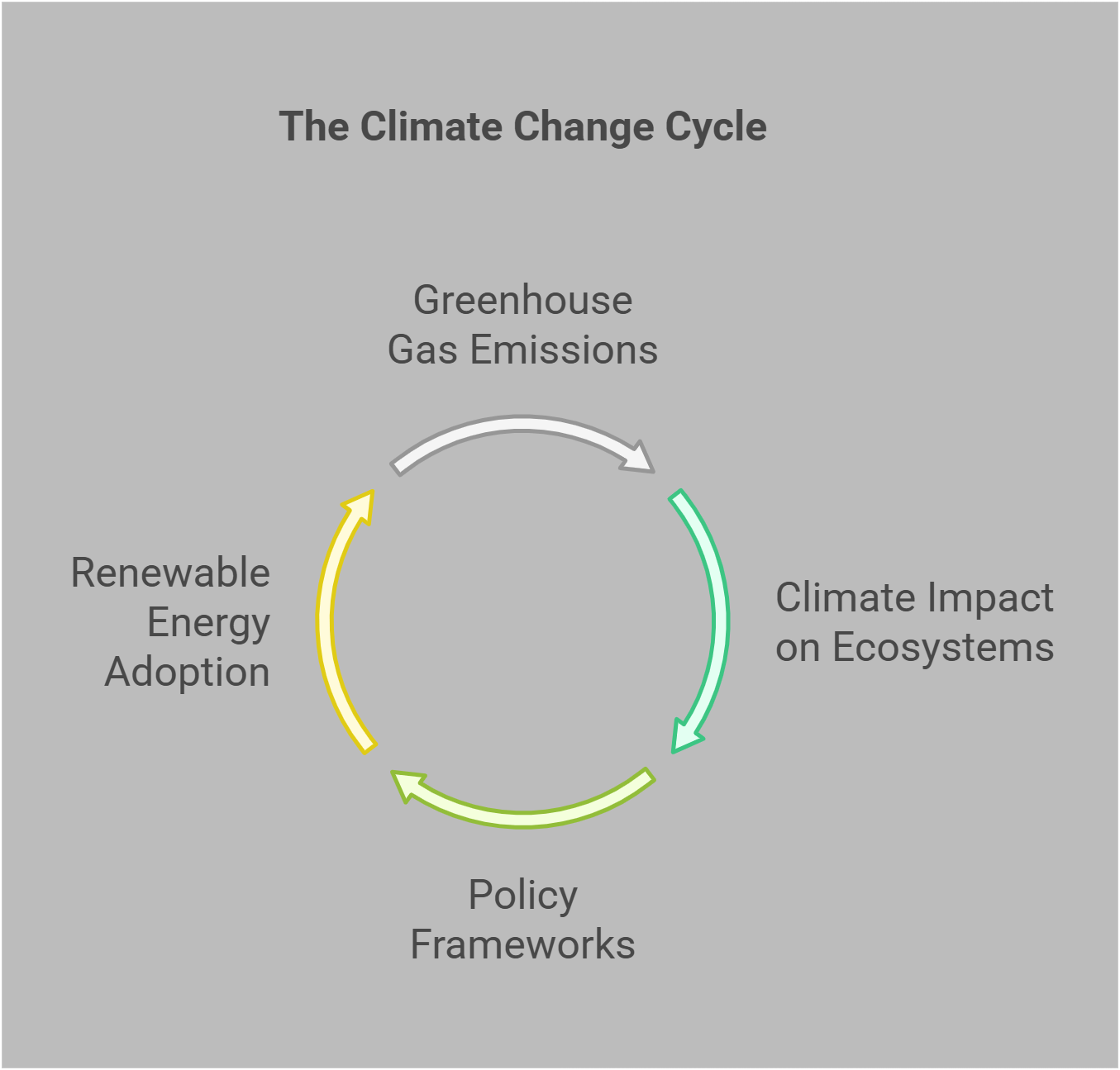
📋 Overview
This guide will explore the following essential climate change concepts:
- Greenhouse Effect
- Carbon Footprint
- Global Warming vs. Climate Change
- Renewable Energy
- Fossil Fuels
- Extreme Weather Events
- Deforestation
- Climate Change Mitigation
- Climate Adaptation
- International Climate Agreements
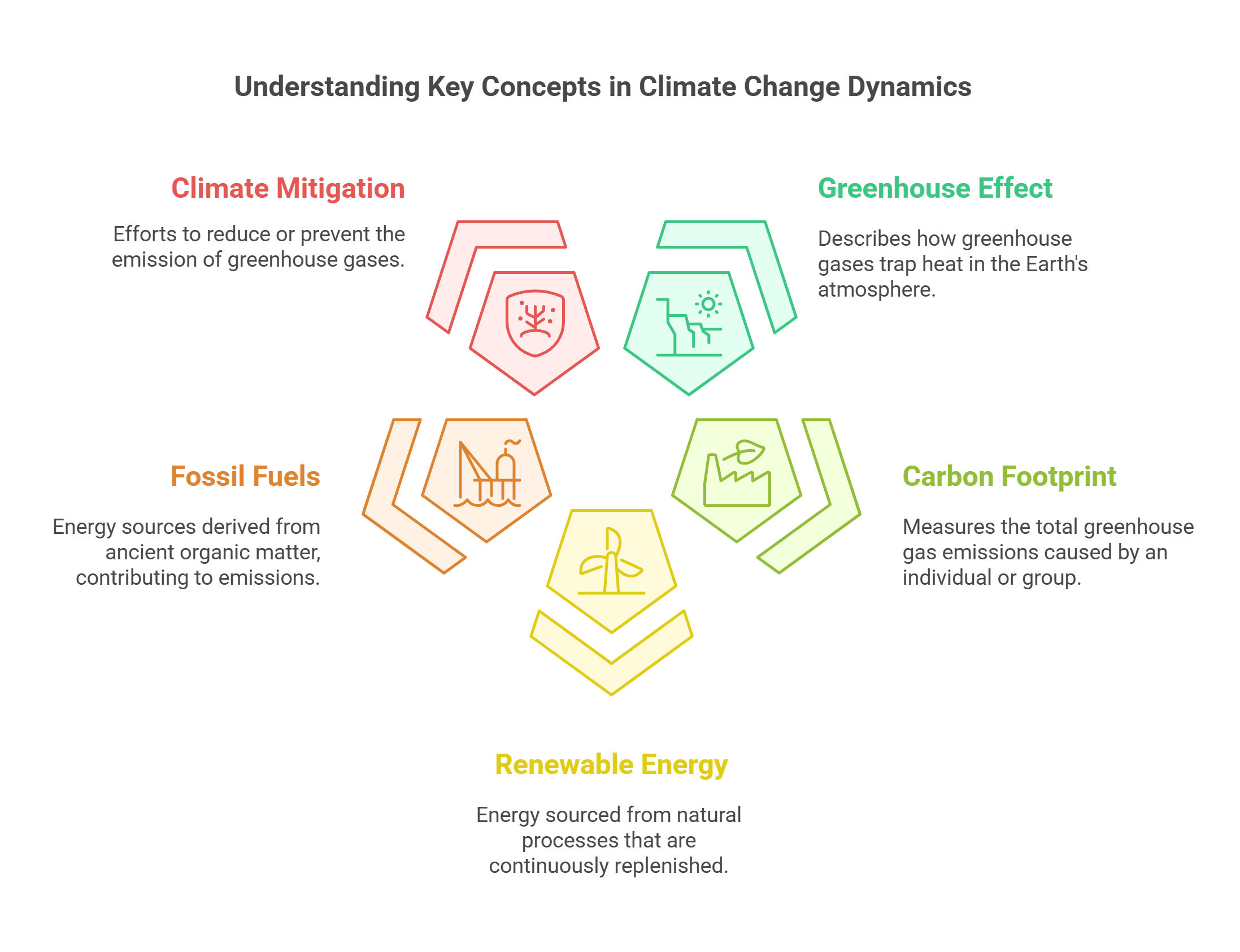
🔍 Detailed Explanations
1. Greenhouse Effect
The greenhouse effect is a natural process where certain gases in Earth’s atmosphere trap heat, keeping the planet warm enough to sustain life. Human activities, such as burning fossil fuels, amplify this effect by increasing greenhouse gas concentrations.
- Key Greenhouse Gases: Carbon dioxide (CO2), methane (CH4), and nitrous oxide (N2O).
- Impact: Enhanced greenhouse effect leads to global warming, melting ice caps, and rising sea levels.
- Example: CO2 emissions from factories and vehicles contribute significantly to atmospheric warming.
Explained Simply: The greenhouse effect is like wrapping the Earth in a warm blanket—too much of it makes the planet overheat.
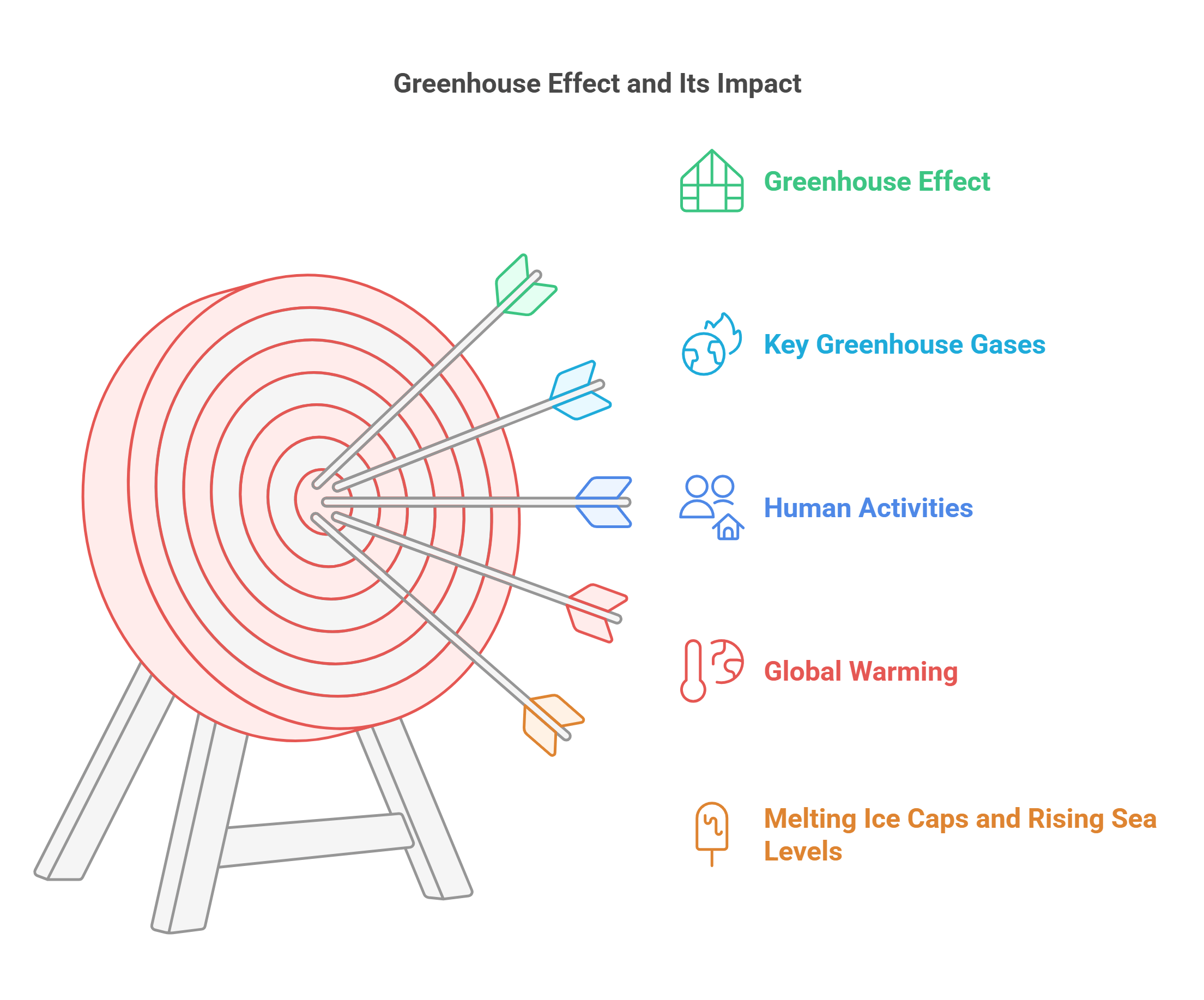
2. Carbon Footprint
A carbon footprint measures the total greenhouse gas emissions caused directly or indirectly by an individual, organization, or activity. It helps quantify environmental impact.
- Components: Includes emissions from transportation, energy use, and food production.
- Reducing Footprints: Actions like using public transport, adopting plant-based diets, and conserving energy reduce carbon footprints.
- Example: An international flight has a larger carbon footprint than local travel by train.
Explained Simply: Your carbon footprint is like the trail of emissions you leave behind with your daily activities.
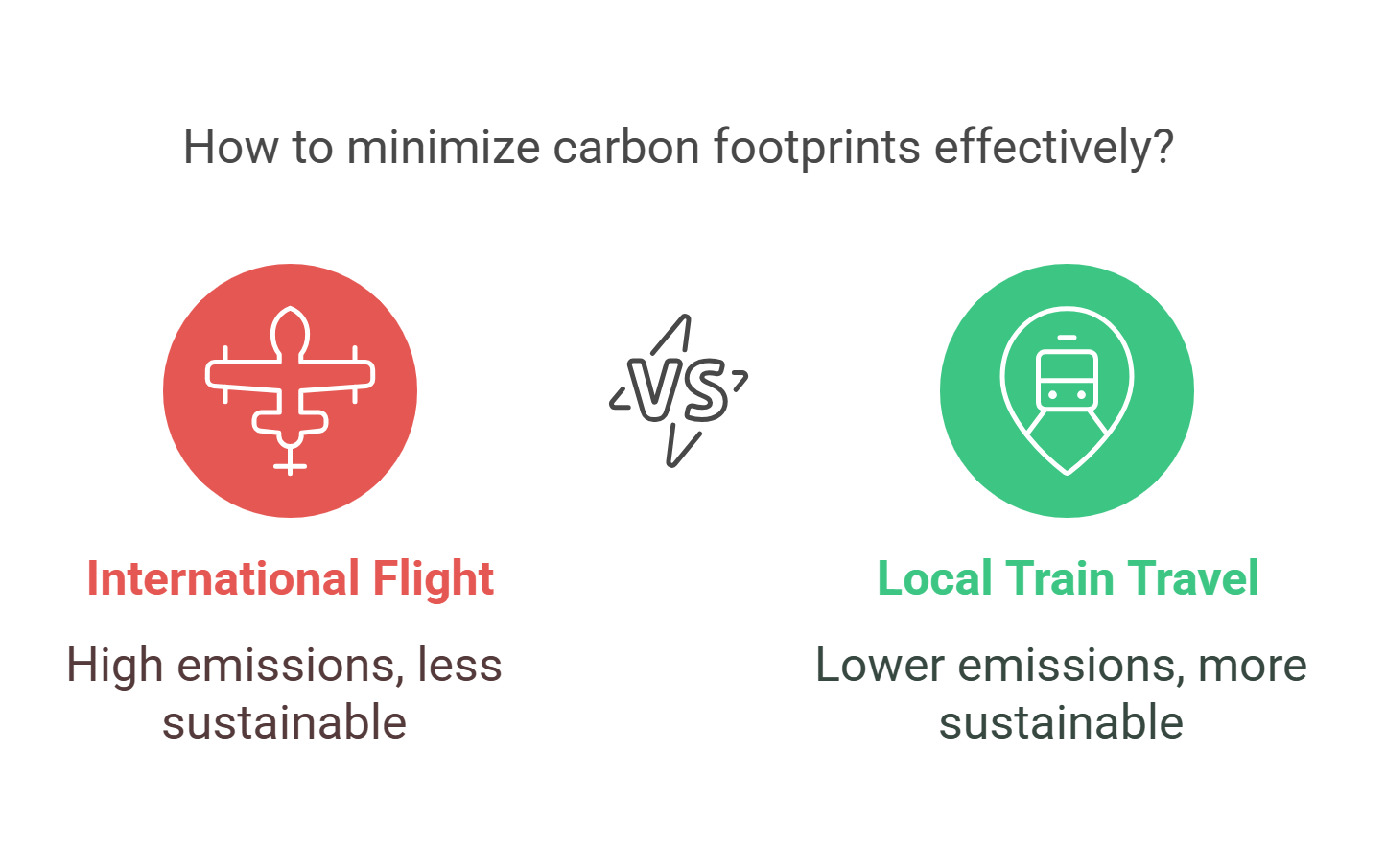
3. Global Warming vs. Climate Change
Global warming refers specifically to the rise in Earth’s average temperature due to increased greenhouse gases. Climate change encompasses broader shifts, including changes in precipitation patterns, storm intensity, and sea levels.
- Global Warming: A subset of climate change focused on temperature increases.
- Climate Change: Includes all environmental changes caused by warming, such as more frequent hurricanes or droughts.
- Example: Melting Arctic ice is a result of global warming, while changing monsoon patterns illustrate climate change.
Explained Simply: Global warming is one piece of the puzzle; climate change is the entire picture of how our planet is evolving.
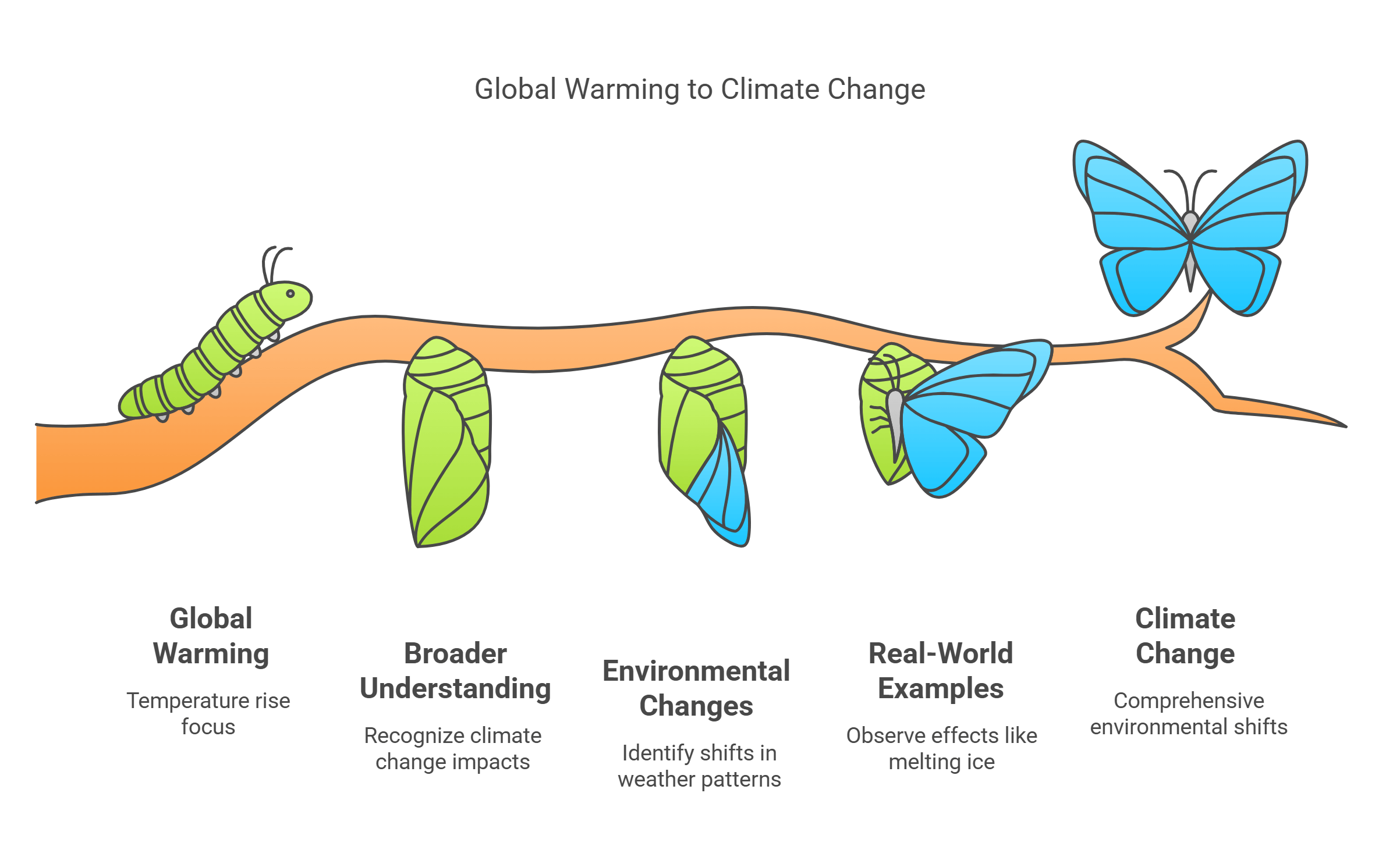
4. Renewable Energy
Renewable energy comes from natural sources that replenish themselves, offering sustainable alternatives to fossil fuels.
- Types: Solar, wind, hydropower, geothermal, and biomass.
- Advantages: Reduces greenhouse gas emissions and dependence on non-renewable resources.
- Example: Countries like Denmark generate a significant portion of electricity from wind energy.
Explained Simply: Renewable energy is like using endless supplies of sunlight or wind instead of depleting finite resources like coal.

5. Fossil Fuels
Fossil fuels are energy sources formed from the remains of ancient plants and animals over millions of years. They include coal, oil, and natural gas.
- Usage: Powers vehicles, generates electricity, and heats homes.
- Drawbacks: Releases large amounts of CO2, contributing to global warming.
- Example: Coal-fired power plants are a significant source of electricity but also major contributors to greenhouse gas emissions.
Explained Simply: Fossil fuels are like burning old reserves of energy, but the smoke (emissions) is harming the planet.
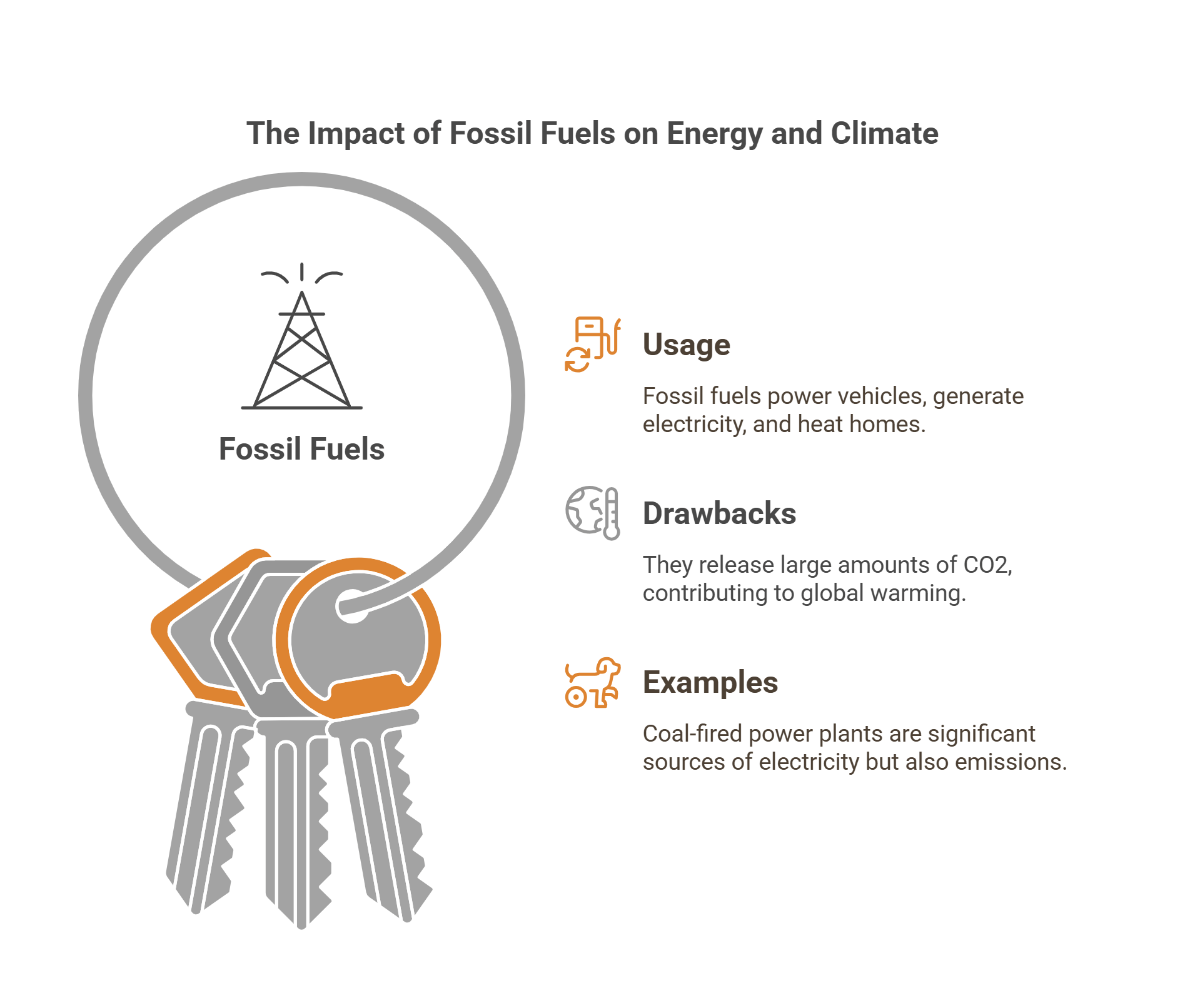
6. Extreme Weather Events
Climate change increases the frequency and intensity of extreme weather events, such as hurricanes, floods, droughts, and heatwaves.
- Causes: Rising temperatures amplify weather systems, making them more severe.
- Examples: Hurricane Katrina (2005) and Australia’s bushfires (2019-2020) are linked to climate-related factors.
- Impact: Leads to economic losses, displacement of populations, and environmental damage.
Explained Simply: Extreme weather events are like nature’s warning signs, becoming louder and more frequent due to climate change.
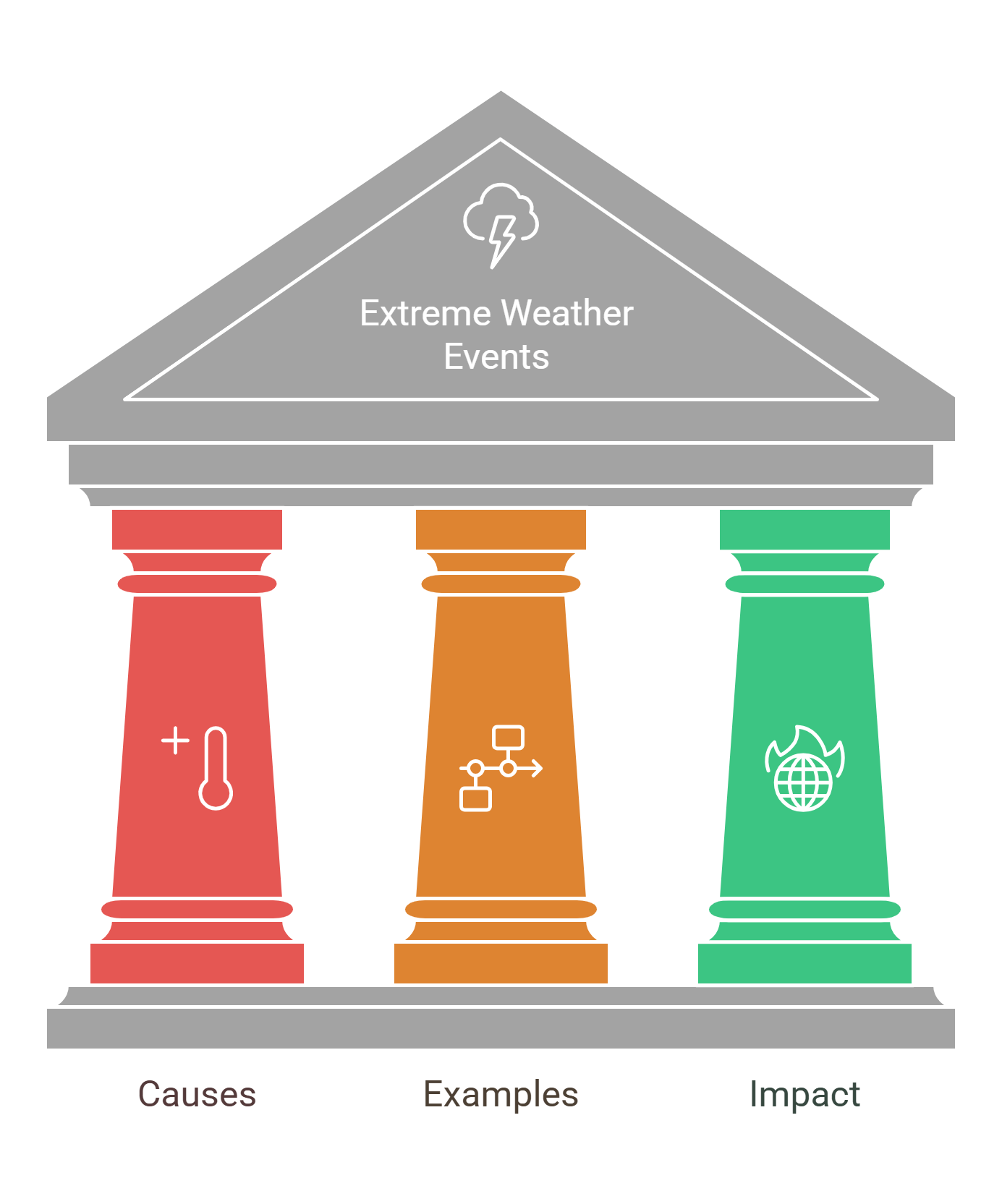
7. Deforestation
Deforestation is the large-scale clearing of forests for agriculture, logging, or urban development. It contributes to climate change by reducing the number of trees that absorb CO2.
- Causes: Slash-and-burn agriculture, illegal logging, and infrastructure expansion.
- Effects: Loss of biodiversity, disrupted water cycles, and increased greenhouse gas concentrations.
- Example: The Amazon rainforest, often called the “lungs of the Earth,” is being rapidly deforested, affecting global CO2 levels.
Explained Simply: Deforestation is like cutting down the Earth’s natural air purifiers, leaving more CO2 in the atmosphere.
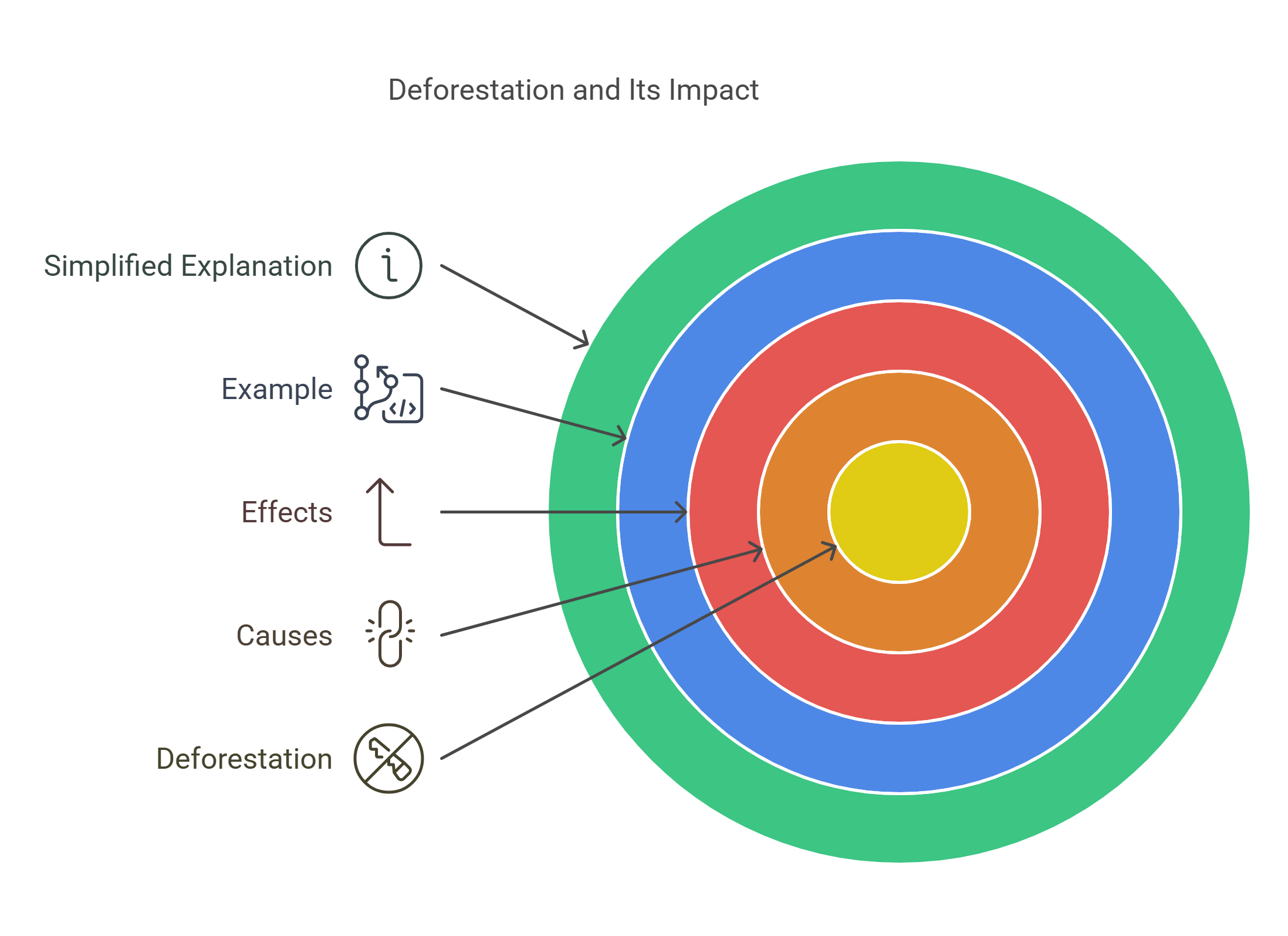
8. Climate Change Mitigation
Mitigation involves actions to reduce or prevent greenhouse gas emissions, aiming to slow the pace of climate change.
- Strategies: Transitioning to renewable energy, reforestation, and improving energy efficiency.
- Example: The Paris Agreement encourages countries to adopt policies to limit global temperature rise to 1.5°C above pre-industrial levels.
- Technological Innovations: Carbon capture and storage (CCS) captures emissions from industrial processes.
Explained Simply: Mitigation is like putting out a fire by reducing the fuel feeding it.
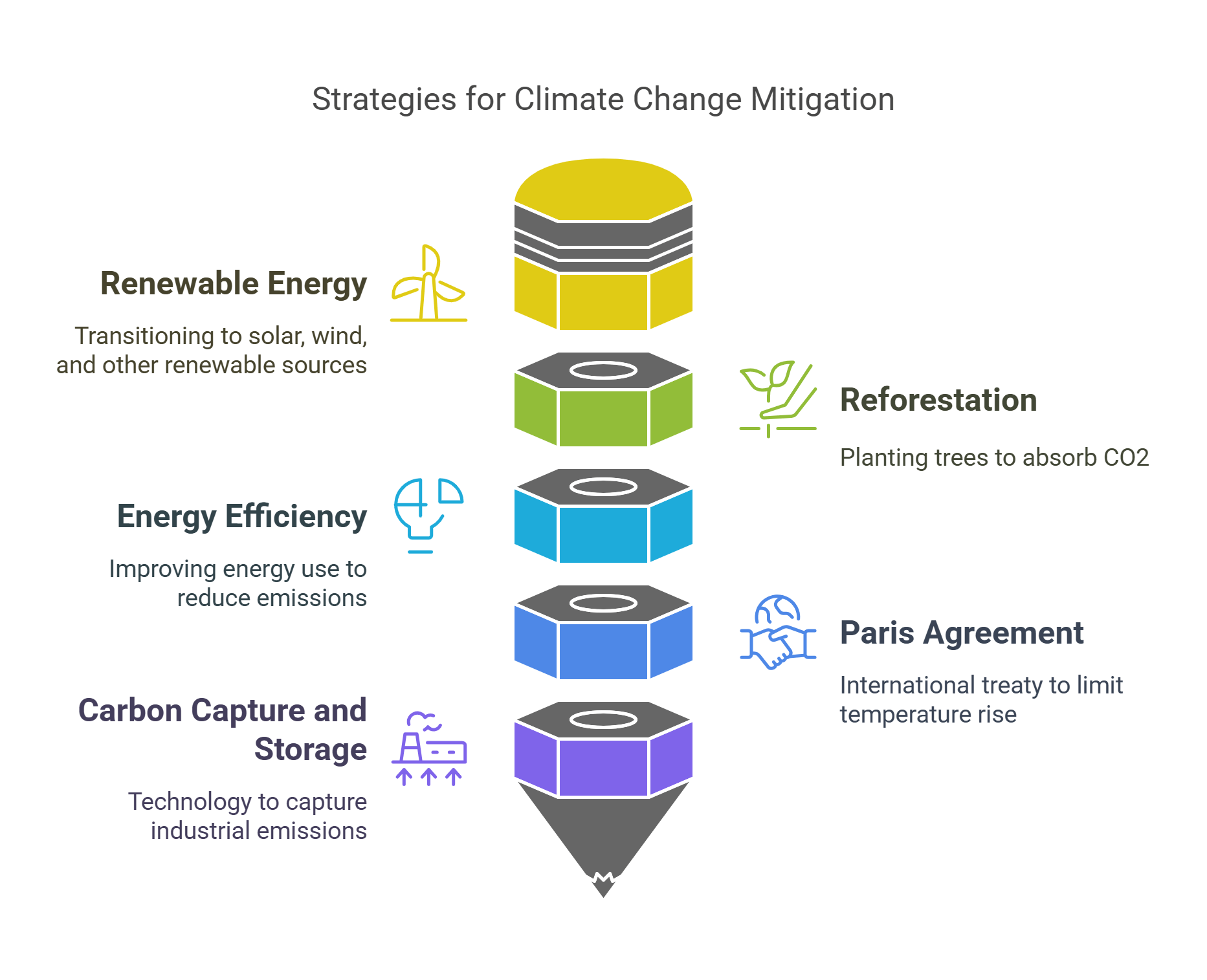
9. Climate Adaptation
Adaptation focuses on adjusting to the effects of climate change, reducing vulnerability and enhancing resilience.
- Examples: Building flood defenses, developing drought-resistant crops, and relocating at-risk communities.
- Urban Planning: Cities like Rotterdam have implemented water management systems to combat rising sea levels.
- Biodiversity: Protecting ecosystems to maintain their natural climate-regulating functions.
Explained Simply: Adaptation is like preparing for a storm by strengthening your house and stocking up on supplies.
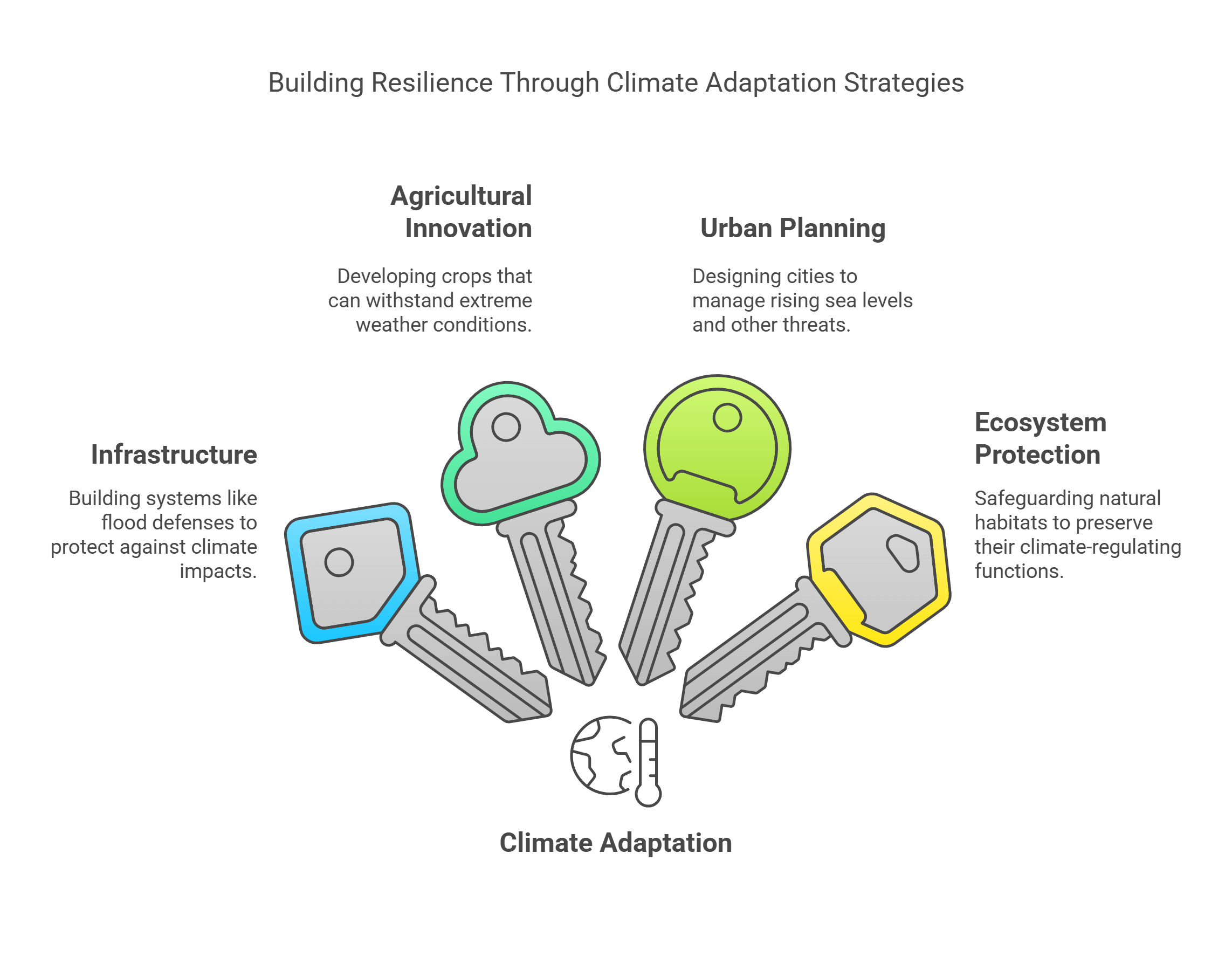
10. International Climate Agreements
These agreements bring nations together to address climate change through collective action and policy frameworks.
- Key Agreements: The Kyoto Protocol (1997) and the Paris Agreement (2015).
- Goals: Limit global temperature rise, promote renewable energy, and finance climate initiatives in developing countries.
- Example: The European Union’s commitment to achieving carbon neutrality by 2050 aligns with international goals.
Explained Simply: International climate agreements are like global teamwork to tackle a problem that affects everyone.
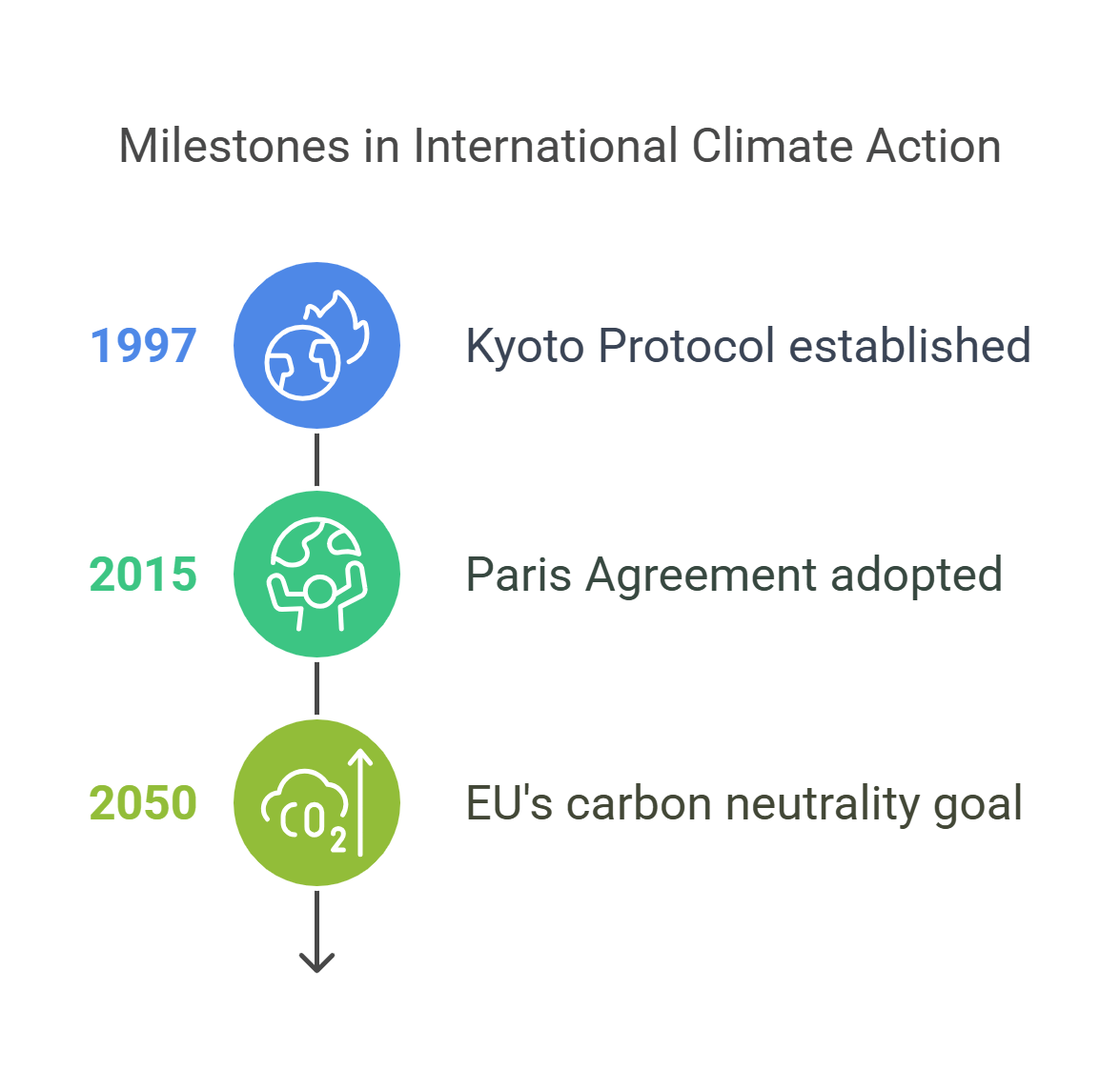
✨ Conclusion
Climate change is one of the most pressing challenges of our time, requiring a blend of mitigation, adaptation, and international collaboration. By understanding concepts like the greenhouse effect, renewable energy, and deforestation, readers can better analyze RC passages on this critical topic. Whether addressing policy solutions or exploring scientific advancements, climate change highlights humanity’s responsibility to protect the planet. 🌍










